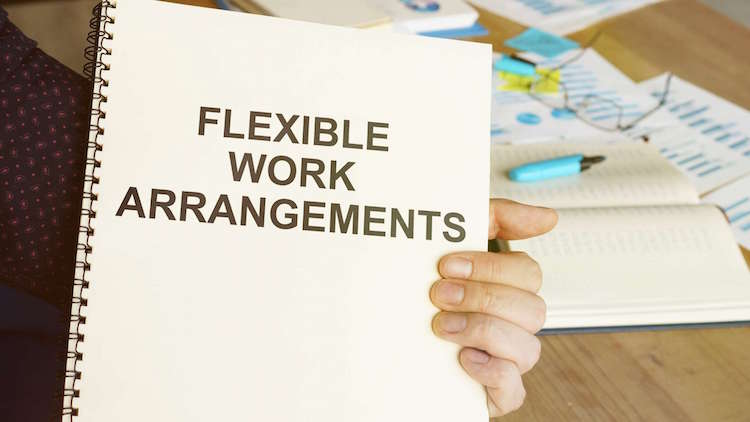“Once you go remote, you can’t go back [to being solely office-based],” Remote Staff CEO Chris Jankulovski said while reminiscing about the fun times he had working remotely from different locations.
And who wouldn’t find working every now and then from a beach resort in Bali or a dainty café in Paris appealing, right? Call it romanticizing remote work, but traveling for leisure while earning an income is generally a good thing. Besides, remote work is good for business. It gives employers access to a wider pool of talent and reduces their overhead costs.
Remote Work As a Permanent Staffing Solution

Remote work has become more than just a temporary fix during the pandemic. It is rapidly becoming a permanent staffing solution for businesses around the world. In fact, even though everyday life is slowly returning to pre-COVID activity, professionals and businesses still prefer to work remotely from any location they prefer.
Australian businesses in the Philippines, for instance, are more confident than ever in the future of the Philippine economy that they are willing to continue working remotely with Filipino professionals according to Philippine Ambassador to Australia Ma. Hellen De La Vega. Moreover, the Fiscal Incentives Review Board (FIRB) allowed IT-BPM (Information Technology and Business Process Management) companies in special economic zones to implement remote work setups until March 2022 (for now).
Introducing the Hybrid Work Model into Businesses
Nicholas Bloom, a professor at Stanford University, said that about 70% of firms are planning to implement a hybrid work arrangement for their staff into the future–something Chris has always envisioned.

Being one of the pioneers of remote work in the Philippines, Chris has always believed in remote work and its potential to empower business owners and Filipino professionals to achieve more.
More than 8,000 Filipino remote workers for 3,000 SME clients later, Chris’s vision is finally coming to life. Just like how he envisioned remote work to empower people in the future, businesses started shifting to remote arrangements to address work restrictions implemented during the pandemic.
“I always envisioned that one day there will be a future where there will be local hires and remote hires as side-by-side staffing strategies for every employer. Since it’s remote, there’s nothing stopping it from being offshore, hence the idea that I saw very early on.”
Okay, wait. You might ask: “Considering the benefits of remote work, wouldn’t it be better to go 100% remote instead of hybrid?” That’s a good point! But allow us to tell you exactly why going hybrid is a much better solution as we go forward.
Why Businesses Should Go Hybrid Moving Forward
1. Hybrid work is great for communication and collaboration.

Remote work has its cons, and one of them is reduced communication and collaboration. We do have tools that allow team members to communicate and collaborate. However, nothing beats communication in the same physical space.
When the COVID pandemic eventually blows over, we will have more freedom to move around outside. Wouldn’t it be nice to visit a physical office and see your team members occasionally for collaborative initiatives? Besides, nobody really wants to communicate with people in front of a computer screen all the time.
Allowing employees to gather in one physical space from time to time will make remote work enjoyable for them. They won’t have to experience feeling isolated and disconnected from the rest of the team.
2. Hybrid work model caters best to employees from different generations.

Remote work can be unfamiliar for some people, and traditional office work can be stifling for others. However, by offering a hybrid work arrangement for your staff, you give them the freedom to work in a setup that works best for them.
The younger generation, for example, prefers to work remotely while pursuing other interests. The older generation, who are used to working in the office, will take some time to finally adjust to working remotely. They will most likely choose to work in the office most of the time unless they are forced to work from home due to a health condition.
If we want a future that is inclusive and if we are aiming to tap talent from all walks of life, then making sure that we respect people’s preferences and personalities is a way to do so. We can definitely attract the best people when we give them the freedom to work wherever they want–may it be the office or at home.
3. Hybrid work arrangements are the most flexible, offering more freedom.

By giving your staff the opportunity to choose where they want to work, you make them feel that they have more control over their lives. Instead of fitting their life into their work, they have more freedom to fit their work into their lives.
The less pressure your staff are to show up in the office, the more engaged and productive they become. Why? Because they feel more empowered and trustworthy, and we need more of these workers in our business.
Aside from offering work-from-home for deep work and office work opportunities for collaborative tasks, we can explore hiring full-time or part-time remote employees or allowing staff to set their work hours and work from any location.
4. Hybrid work setups promote increased worker protection.

Due to the pandemic, businesses did not only decide to go remote to survive. They made the decision to keep their workers safe from COVID. This move by businesses has made people more picky when it comes to the company they want to work for.
According to Marc Cenedella, founder and chief executive of Ladders, the opportunity to work remotely is going to become the new signing bonus. It will take more than free coffee or competitive salary to attract talent of the future.
However, going hybrid is an even more attractive offering. Being able to work in the office from time to time and seeing colleagues in the flesh can be good for your staff’s mental health, reducing feelings of isolation and loneliness. Moreover, you benefit from happy, healthy, productive, and committed staff members.
5. Hybrid is the perfect balance between office work and remote work.

The hybrid work model gives the best of both worlds. It is the perfect mix of structure, independence, sociability, and flexibility.
Going hybrid provides structure on the one hand and independence on the other. Your staff still have a structure to follow that is enough to keep them in alignment with your company’s goals and values, but they have the freedom to increase their productivity by choosing to work whenever and wherever they want.
Staff members who are working on a hybrid work arrangement have the opportunity to socialise and collaborate for better project outcomes and work alone to focus on completing urgent tasks.
Times have definitely changed, and with the trauma brought on by the COVID pandemic, we cannot stick to the traditional office work setup. And despite the fact that work restrictions are starting to ease, returning to the office is still a process that could take a long time.
Going 100% remote may be a good solution, but it is only effective short-term. Sooner or later, people will crave face-to-face interaction. Therefore, if we want a long-term sustainable solution, why not consider going hybrid? It is not only inclusive, but it also promotes freedom, work-life balance, and health and well-being.























 Zero Recruitment Fee
Zero Recruitment Fee